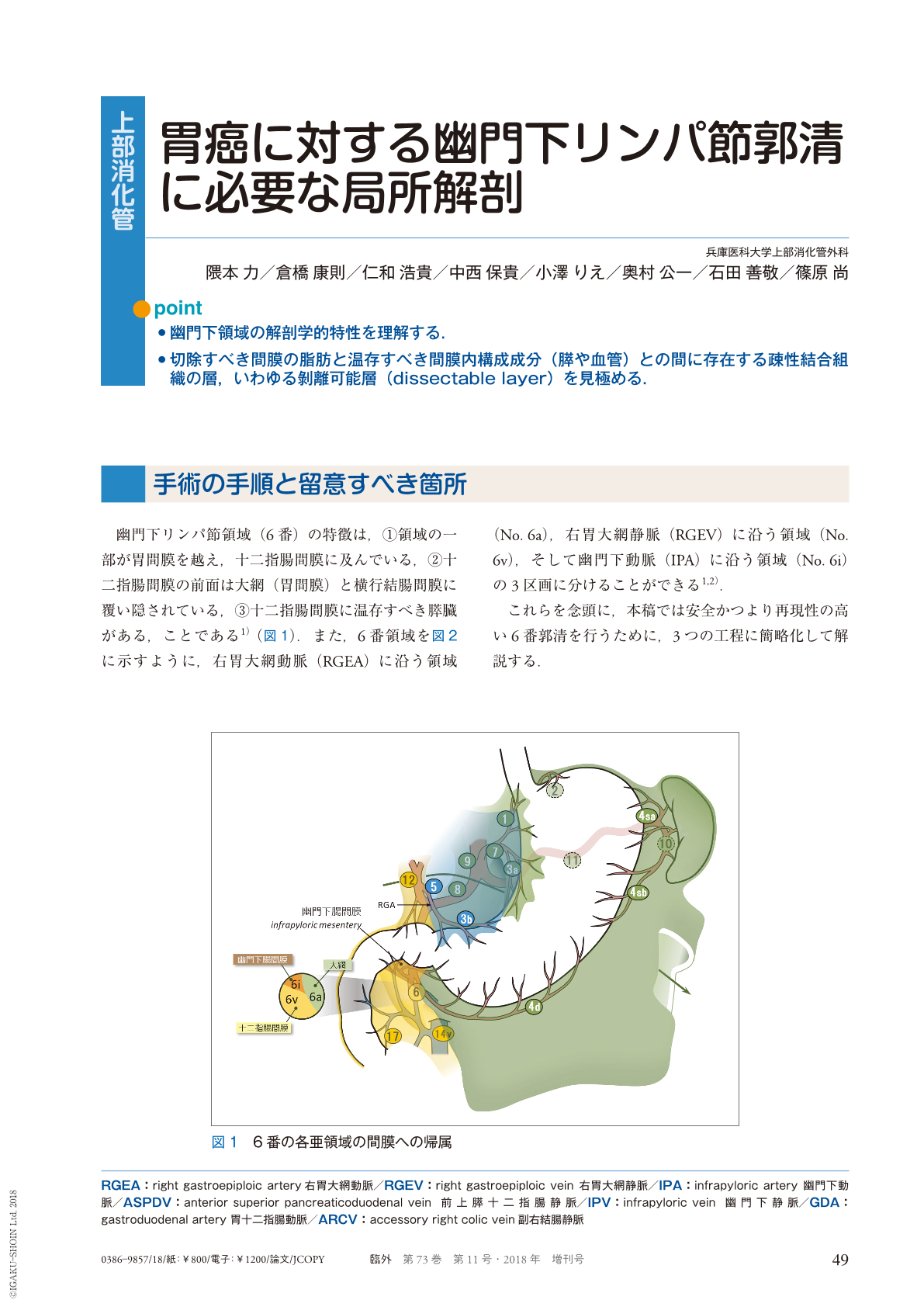9 0 0 0 OA 頸部転移巣から発見された甲状腺微小癌症例
- 著者
- 篠原 尚吾 山本 悦生 田辺 牧人 辻 純 宗田 由紀 坂本 達則 金 泰秀 寺下 健洋
- 出版者
- 耳鼻咽喉科臨床学会
- 雑誌
- 耳鼻咽喉科臨床 (ISSN:00326313)
- 巻号頁・発行日
- vol.92, no.7, pp.779-783, 1999-07-01 (Released:2011-11-04)
- 参考文献数
- 19
- 被引用文献数
- 2 2
Papillary microcarcinomas (PMCs) which are 1.0cm or less in diameter are a specific subgroup of thyroid cancer. As the prevalence of these tumors found in autopsy cases was reported to be 10 to 28.4% in Japan, the necessity of surgical treatment of PMCs has been questioned. However, PMCs are often found in conjunction with advanced metastases in cervical lymph nodes, lung, etc..We reviewed eight cases with PMCs revealed by the presence of cervical metastases over the past 10 years. Five cases were revealed by manifest cervical lymph node metastases. Two of the other three cases were operated on for treatment of metastatic lesions subsequent to other diagnoses, notably a parotid tumor and lateral cervical cyst. The PMCs were revealed in a postoperative histological study of these two cases. The remaining case was discovered incidentally during neck dissection for laryngeal cancer. Preoperative ultrasonography was undertaken in seven cases. Two cases showed multif ocal small high echoic spots without tumors and one case showed no abnormal findings in the thyroid.In all cases, total thyroidectomy, unilateral or bilateral neck dissection and postoperative radioiodine scintigraphy were performed. Multifocal tumors in the thyroid were proven histologically in four cases. In one case, the primary lesion was not found even in a postoperative histological study.In accordance with these observations, PMCs revealed by cervical metastases shoul be treated as advanced thyroid carcinomas.
1 0 0 0 OA レーズンから分離した天然酵母のパン酵母としての特性
- 著者
- 渡邉 悟 篠原 尚子 金井 節子 飯塚 良雄
- 出版者
- 東京聖栄大学
- 雑誌
- 聖徳栄養短期大学紀要 (ISSN:02866366)
- 巻号頁・発行日
- vol.36, pp.1-6, 2005-12-20
- 被引用文献数
- 1
(1)飯塚パンの元種から酵母(飯塚菌、I)を分離同定したところ、一般のパン酵母として知られるサッカロミセス・セレビシアであった。(2)Iと一般の生イースト(オリエンタル酵母、O;三共、S)と生育状況について比較したところ、YM培地では菌体量が同等であったが、レーズン培地では、1>S>Oの順であった。(3)気体発生量については、レーズン培地で1>S>Oの順であり、中種で同等と判断でき、本捏で1>S>Oの順であった。(4)Iの生育の至適pHを判定したところ、一般の酵母のpH5〜6とは違い、pH3.9付近であった。(5)飯塚パン製造時のレーズン添加の影響を見たところ、レーズン添加で膨張体積が増加し、Iの気体発生を促すには、レーズン添加が適していた。以上より、飯塚パン製造には、Iが適しており生育の至適はpH3.9であり、レーズンを含むパンの製造において気体発生量が多くなることを示唆した。
1 0 0 0 胃癌に対する幽門下リンパ節郭清に必要な局所解剖
1 0 0 0 OA 内耳奇形を伴う小児人工内耳症例の術後成績
- 著者
- 諸頭 三郎 山崎 博司 内藤 泰 眞鍋 朋子 山本 輪子 藤原 敬三 篠原 尚吾
- 出版者
- 一般社団法人 日本聴覚医学会
- 雑誌
- AUDIOLOGY JAPAN (ISSN:03038106)
- 巻号頁・発行日
- vol.55, no.1, pp.68-76, 2012 (Released:2012-03-28)
- 参考文献数
- 23
当科で人工内耳手術を行った小児内耳奇形例11例をSennaroglu分類による奇形の型と人工内耳使用マップ, 術前聴力と術後人工内耳装用域値, 術前後の語音聴取や言語発達の成績, 発話明瞭度との関連を評価し, この分類法の臨床的妥当性について検討した。内耳奇形の内訳は2例がcommon cavity (CC), 2例がincomplete partition type I (IP-I), 5例がincomplete partition type II (IP-II), 1例がcochleovestibular hypoplasiaとcochlear nerve deficiencyの合併例 (CVH/CND), 1例が内耳道狭窄とCNDの合併例であった。11例中8例において人工内耳で音感を得るのに通常より大きな電荷量を必要とした。嚢胞状の蝸牛を呈するCCとIP-Iの4例中2例は術後語音聴取成績, 言語発達は良好であったが2例は不良でばらつきがあった。IP-II5例はすべての検討項目で術後成績が良好で言語メディアに聴覚-音声を使用していた。CND合併例2例は術後も語音聴取や言語発達の成績が不良で視覚言語の併用を必要とした。IP-IとIP-IIを峻別するSennaroglu分類とMRIによる蝸牛神経の評価の臨床的意義が確認された。
1 0 0 0 機能温存が出来た被膜下摘出頸部神経鞘腫
- 著者
- 平野 滋 篠原 尚吾 庄司 和彦 児嶋 久剛
- 出版者
- The Society of Practical Otolaryngology
- 雑誌
- 耳鼻咽喉科臨床 (ISSN:00326313)
- 巻号頁・発行日
- vol.89, no.1, pp.75-80, 1996-01-01
- 被引用文献数
- 14 2
Intracapsular enucleation is thought to be a suitable method for preserving post-operative function of the original nerve following treatment for cervical neurilemmomas. In previous studies, however, post-operative palsy occurred in most cases and there have been seen several cases in which nerve funtions did not recover. In the present study, we performed a modified method of Intracapsular enucleation for two cervical neurilemmomas, the first case involved the facial nerve, the second the hypoglossal nerve. In these cases, post-operative palsy has not been observed since immediately after surgery. Important points in this procedure include (1) making the incision line at a point on the capsule where few nerve fibers exist, (2)ablating the capsule from the tumor as gently as possible, (3) monitoring nerve function using a nerve stimulator throughout the procedure.

